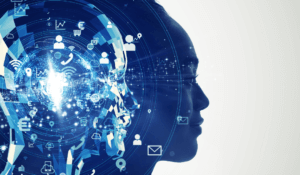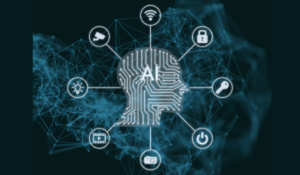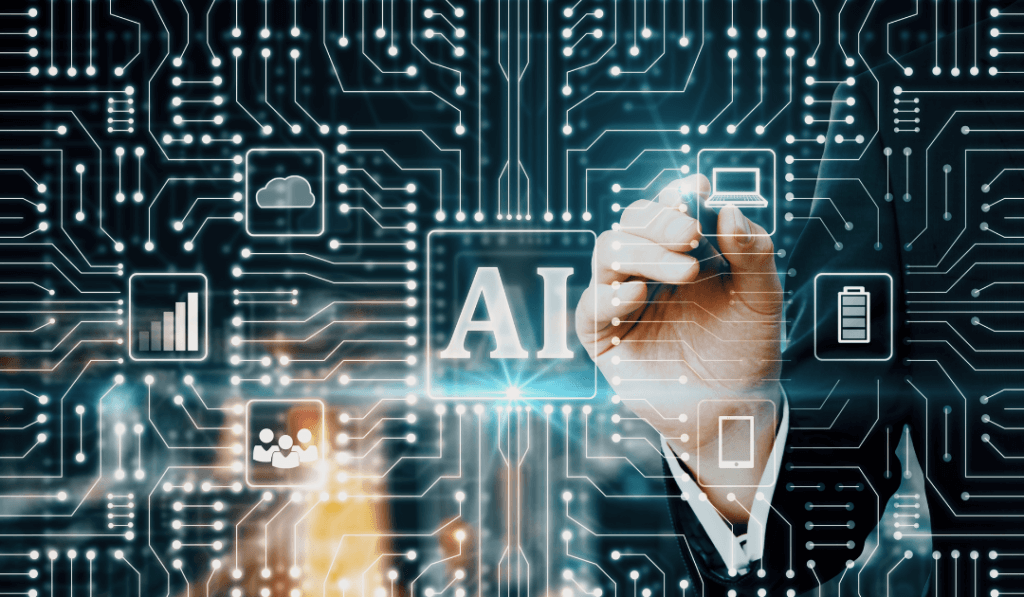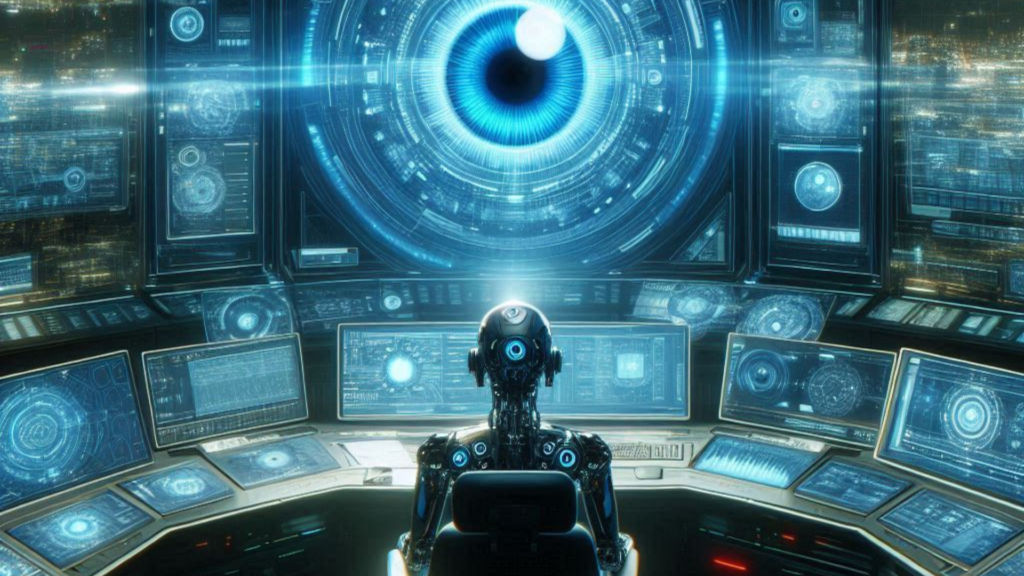Artificial intelligence (AI) has emerged as a transformative force, revolutionizing industries and shaping the future of technology. At its core, AI encompasses the creation of intelligent machines capable of performing tasks that typically require human intelligence. The GOALS OF AI are vast and multifaceted, encompassing a spectrum of aspirations that seek to enhance human capabilities, solve complex problems, and unlock new possibilities.

The Goals of AI : Emulating Human Cognitive Abilities
At the heart of AI research lies the pursuit of emulating human cognitive abilities. This endeavor encompasses a range of objectives:

Reasoning and Problem-Solving:
- AI systems aim to reason and solve problems in a manner akin to humans, tackling tasks like planning, game playing, and machine learning. This pursuit seeks to equip AI with the ability to analyze complex situations, formulate strategies, and make informed decisions.
Example: IBM’s Deep Blue chess computer defeated world champion Garry Kasparov in 1997, demonstrating AI’s ability to reason and strategize in complex game environments.
Learning and Adaptation:
- AI systems should continuously learn from data and adapt to new scenarios, enabling them to perform tasks like natural language processing, image recognition, and machine translation. This objective highlights the desire for AI to possess the ability to continuously expand its knowledge base and refine its skills.
Example: Google Translate utilizes AI algorithms to translate between over 100 languages, demonstrating AI’s ability to adapt and learn from vast amounts of linguistic data.
Perception and Interaction:
- AI systems should seamlessly perceive and interact with the physical world, encompassing tasks like robotics, computer vision, and autonomous vehicles. This pursuit aims to endow AI with the capability to navigate, manipulate, and respond to the physical environment.
Example: Self-driving cars, like those developed by Tesla and Waymo, utilize AI algorithms to perceive their surroundings, make decisions, and navigate autonomously.
Achieving the Goals of AI: Automating Tasks and Enhancing Efficiency
A fundamental goal of AI is to automate repetitive tasks and augment human capabilities, paving the way for increased productivity and efficiency:

Automation of Repetitive Tasks:
- AI can automate many mundane tasks currently performed by humans, such as data entry, customer service, and manufacturing. This objective seeks to free up human workers from tedious tasks, allowing them to focus on more creative and strategic endeavors.
Example: AI-powered chatbots are increasingly used to handle customer service inquiries, providing 24/7 support and freeing up human customer service representatives for more complex tasks.
Decision-Making Enhancement:
- AI can assist humans in making informed decisions by analyzing vast amounts of data and identifying patterns that might elude human observation. This objective aims to empower humans with data-driven insights that can inform decision-making processes.
Example: AI algorithms are used in financial trading to analyze market data and identify patterns, helping traders make informed investment decisions.
Process Optimization:
- AI can optimize processes and systems by identifying inefficiencies and suggesting improvements, enhancing productivity in industries like supply chain management, transportation, and energy. This goal seeks to streamline operations, eliminate bottlenecks, and maximize resource utilization.
Example: AI algorithms are used in supply chain management to optimize routes, reduce delivery times, and improve overall efficiency.
Expanding Horizons and Conquering Challenges: The Limitless Goals of AI
The GOALS OF AI extend beyond automation, venturing into uncharted territories of innovation and discovery:
Scientific Discovery:
- AI can accelerate scientific discovery by analyzing massive datasets and uncovering patterns that might go unnoticed by humans, propelling progress in fields like medicine, biology, and astronomy. This goal seeks to harness AI’s ability to process vast amounts of data, identify hidden patterns, and generate new hypotheses.
Example: AI algorithms are used in drug discovery to analyze molecular structures and identify potential drug candidates, accelerating the development of new treatments.
Creative Problem-Solving:
- AI can tackle complex problems that are difficult or impossible for humans to solve, opening doors to innovations in areas like drug discovery, material development, and artistic expression. This objective seeks to leverage AI’s computational power and pattern recognition capabilities to solve intractable problems.
Example: AI algorithms are used in materials science to design new materials with desired properties, such as increased strength, conductivity, or biocompatibility.
Human Capability Augmentation:
- AI can augment human capabilities, providing superhuman strength, speed, and precision, with applications in healthcare, manufacturing, and exploration. This goal aims to empower humans with enhanced capabilities, enabling them to perform tasks that are beyond human limitations.
Example: AI-powered exoskeletons can provide superhuman strength to assist with tasks like lifting heavy objects or performing physical rehabilitation exercises.
Final Thoughts
The goals of AI are far-reaching and ambitious, encompassing a spectrum of aspirations that seek to enhance human capabilities, solve complex problems, and unlock new possibilities. From emulating human intelligence to automating tasks and augmenting human capabilities, AI has the potential to revolutionize industries, reshape society, and transform our world in ways we can only begin to imagine.
As AI research continues to advance and AI technologies become increasingly sophisticated, we can expect to see even more transformative applications emerge in the years to come. The future of AI is bright, and it is up to us to harness its potential responsibly and ethically to create a better future for all.
FAQs about Goals of AI:
Q: What is the goal of automating tasks and enhancing efficiency with AI?
A: AI aims to automate repetitive and mundane tasks, freeing up human workers to focus on more creative, strategic, and value-added pursuits. Additionally, AI can optimize processes and systems to improve efficiency, reduce costs, and enhance resource utilization.
Q: How can AI automate tasks?
AI can automate tasks by learning from data, identifying patterns, and making decisions. For example, AI can be used to automate customer service tasks, data entry, and manufacturing processes.
Q: How can AI improve efficiency?
AI can improve efficiency by analyzing data, identifying inefficiencies, and suggesting improvements. For example, AI can be used to optimize supply chains, manage energy consumption, and improve traffic flow.
Q: What are the benefits of automating tasks and enhancing efficiency with AI?
The benefits of automating tasks and enhancing efficiency with AI include:
- Increased productivity
- Reduced costs
- Improved quality
- Enhanced safety
- Increased customer satisfaction
Q: What are the challenges of automating tasks and enhancing efficiency with AI?
The challenges of automating tasks and enhancing efficiency with AI include:
- The cost of implementing AI
- The need for training and retraining employees
- The potential for job displacement
- The ethical implications of AI
Article Summary
This article explore artificial intelligence and its transformative goals and the potential impact it holds for our future. It outlines AI’s pursuit of emulating human cognitive abilities, automating tasks and enhancing efficiency, and expanding horizons through scientific discovery, creative problem-solving, and human capability augmentation.
The article highlights the potential benefits of AI, such as increased productivity, improved efficiency, and enhanced decision-making. However, it also acknowledges the challenges that AI presents, including job displacement and ethical considerations.
In conclusion, the article emphasizes the immense potential of AI and the importance of responsible and ethical development to ensure that AI benefits all of humanity





